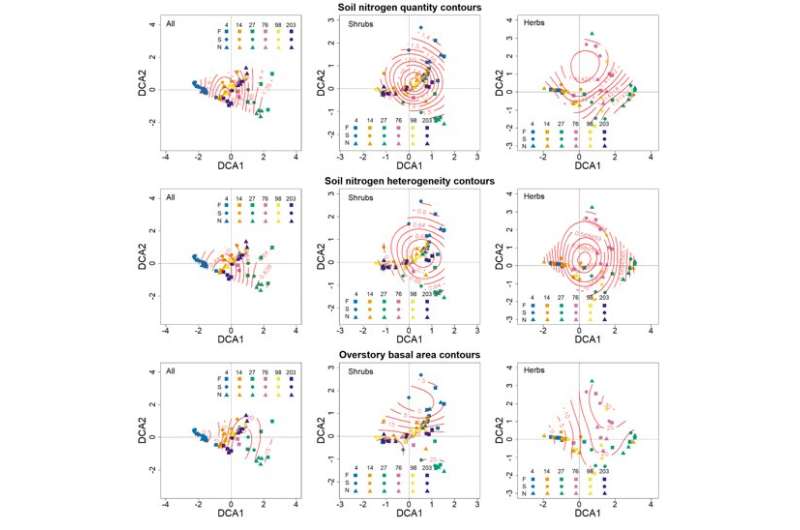Post-fire understory recovery is regulated by multiple factors in Chinese boreal forest

Increasing disturbance activities contribute largely to the global degradation of forested ecosystems, with implications to biodiversity and ecosystem functioning. Understanding restoration processes of forest biodiversity, community structure, and ecosystem functioning is a key issue in restoration ecology. In boreal forests, understory vegetation composes the majority of overall forest biodiversity and contributes greatly to ecosystem functioning, and seems to be an important determinant of restoration success after disturbance.
Previous studies have examined patterns of understory species composition and diversity in relation to stand development and overstory characteristics following stand-replacing wildfire disturbances. However, the mechanisms driving post-fire recovery of understory cover, diversity, and community composition are still not well known.
To address this issue, Dr. Liu Bo and Dr. Liang Yu from the Landscape Process Group of the Institute of Applied Ecology (IAE), Chinese Academy of Sciences (CAS), tested how the multiple factors of soil nitrogen quantity and heterogeneity, stand age, topographic position (Flat location, North-facing slope and South-facing slope), and overstory basal area affected understory characteristics (cover, richness, evenness, and composition) during boreal forest succession following wildfire disturbance.
The study revealed that shrubs and herbs responded differently to soil nitrogen, stand age, overstory basal area, and topographic position. Shrub cover showed increasing trends over stand age and soil nitrogen level, while herb cover tended to decrease with soil nitrogen level and overstory basal area.
Understory richness increased with stand age on north-facing slopes and decreased along with soil nitrogen level across the three topographic positions. The dominant species shifted from herbs to shrubs during understory recovery.
The results highlight the importance of topography and stand age in determining successional patterns of boreal forest understory vegetation through controlling light and soil resource heterogeneity.
The study has been published in the journal Forest Ecology and Management with the title of "Strong influences of stand age and topography on post-fire understory recovery in a Chinese boreal forest."
More information: Bo Liu et al. Strong influences of stand age and topography on post-fire understory recovery in a Chinese boreal forest, Forest Ecology and Management (2020). DOI: 10.1016/j.foreco.2020.118307
Journal information: Forest Ecology and Management
Provided by Chinese Academy of Sciences

















